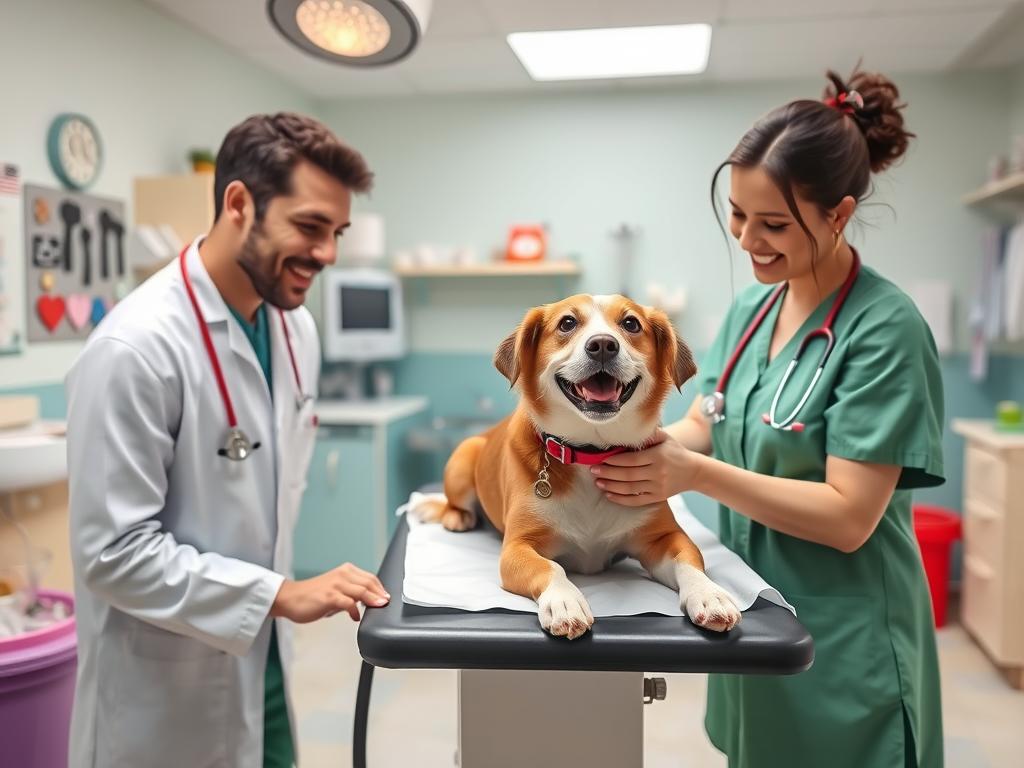Did you know that an annual veterinary exam for your pet is equivalent to a human visiting a doctor every four to five years? This staggering difference arises from the rapid aging process in animals, making preventive care vital for ensuring long-term health. By implementing the best ways to prevent common diseases in pets, you not only enhance your companion’s quality of life but also reduce the risk of chronic afflictions that could lead to more significant health issues down the line.
Recognizing the importance of routine check-ups, vaccinations, and maintaining a healthy weight can significantly impact overall well-being. For instance, leaner pets not only live longer but also encounter fewer health problems. Additionally, spaying or neutering your furry friend can prevent certain infections and types of cancer. These health tips are pivotal in the journey of disease prevention, allowing for early detection and intervention in case any health issues arise.
As you read further, you’ll discover how regular veterinary visits, proper nutrition, and hygiene practices contribute to keeping your beloved companion free from diseases. Understanding these components will empower you to take action and provide better care for your pet’s health.
Key Takeaways
- Annual veterinary exams are crucial for dogs due to their rapid aging process.
- Maintaining a lean weight can prolong your dog’s life and enhance overall health.
- Spaying or neutering can prevent various health issues, including some cancers.
- Regular preventive care, including vaccinations, plays a significant role in disease prevention.
- Annual or bi-annual wellness checks can detect illnesses that may not show symptoms.
- Practicing good hygiene can reduce the risk of zoonotic diseases between pets and humans.
Understanding Common Dog Diseases
Being aware of common dog diseases is crucial for any responsible pet owner. Knowledge of dog illness prevention begins with understanding the types of diseases that can affect your canine companion. Early recognition of symptoms and understanding how these illnesses spread can help ensure your dog’s well-being.
Types of Diseases to Be Aware Of
Common dog diseases encompass a range of conditions, including:
- Heartworm disease, transmitted by mosquitoes, which affects nearly one million dogs in the United States.
- Canine parvovirus, notorious for its rapid progression, leading to most fatalities occurring within 48-72 hours after sickness onset.
- Various forms of cancer, affecting one in four dogs; certain breeds are more susceptible, such as Boxers and Golden Retrievers.
- Diabetes, particularly prevalent in female dogs between the ages of 6 to 9 years, along with certain breeds like Australian Terriers.
Symptoms to Look For
Recognizing symptoms in your dog plays a key role in maintaining understanding dog health. Key signs may include:
- Changes in appetite or energy levels
- Signs of vomiting or diarrhea
- Fluffed fur or lethargy
- Increased aggression or altered behavior
- Respiratory issues, which may indicate illness
Prompt action is necessary if these symptoms present themselves.
How Diseases Spread
Understanding how diseases spread assists in effective dog illness prevention. Here are ways transmission can occur:
- Contact with other infected animals can promote illness.
- Living in contaminated environments can increase the risk of disease.
- Bites from infected pests, such as fleas, can lead to serious conditions. A female flea produces 40-50 eggs daily, rapidly affecting dog populations.
Maintaining a clean environment and regular veterinary check-ups significantly reduce these risks. For more insights on recognizing signs in pets, you can refer to this resource.
Importance of Regular Veterinary Check-ups
Regular veterinary check-ups serve as a cornerstone for maintaining your dog’s health. These visits facilitate thorough examinations, allowing veterinarians to assess health indicators such as breathing and heart rate. Identifying subtle changes during these appointments can lead to early interventions that significantly improve health outcomes.
What to Expect During Visits
During a veterinary appointment, you can expect a comprehensive evaluation of your dog. The veterinarian typically examines the eyes for conditions like glaucoma, assesses the ears to prevent infections, and checks the mouth for dental issues or tumors. A close inspection of the neck for swollen lymph nodes and chest examinations help in identifying circulatory or respiratory problems. Abdominal checks enable the vet to evaluate vital organs and detect any pain or abnormalities. This proactive approach allows for a better understanding of your dog’s condition and life stage.
Recommended Vaccination Schedules
Vaccination schedules for dogs are crucial for preventing serious diseases. Puppies should have regular check-ups every 3-4 weeks until they reach about 16 weeks old, ensuring timely vaccinations. Adult dogs need at least one veterinary check-up annually, while senior dogs require biannual visits for optimal health monitoring. Vaccinations protect against diseases such as rabies and distemper, reinforcing the importance of adhering to these schedules. You can learn more about the significance of timely vaccinations and check-ups here.
The Role of Preventative Care
Preventive care is instrumental in maintaining your dog’s overall well-being. Through regular veterinary check-ups, vaccines, and tailing a healthy diet and exercise regimen, pet owners can help mitigate potential health issues. By engaging in preventive measures, you can not only ensure your dog remains healthy but also save on costs associated with emergency treatment resulting from neglected signs or symptoms. Early detection and proactive care lead to better long-term health for your furry friend.

Nutrition’s Role in Dog Health
Understanding proper pet nutrition is crucial for maintaining the health and wellness of your furry friend. High-quality food plays an essential role in preventing diseases and promoting longevity. Nutritional requirements can vary significantly depending on life stage, breed, and activity level, making it important to choose the right diet tailored to their specific needs.
Choosing High-Quality Dog Food
When selecting dog food, look for brands that meet the standards set by the Association of American Feed Control Officials (AAFCO). High-quality dog food should contain necessary nutrients such as protein, fats, carbohydrates, vitamins, and minerals, as well as meet minimum dietary protein requirements. Brands like Hill’s, Purina, and Iams are known for producing foods that satisfy these standards. AAFCO requires details on food labels, including feeding directions and nutritional adequacy statements, ensuring you know what goes into your dog’s diet.
Supplements for Immune Support
While a balanced diet is foundational, incorporating immune-supporting supplements can enhance your pet’s health, especially for older animals or those with specific health concerns. Ingredients high in antioxidants contribute to boosting the immune system and can play a role in preventing conditions like cancer. Essential fatty acids from fats support healthy skin and coat, contributing positively to overall wellness.
Foods to Avoid
Some human foods can be harmful to dogs. It’s vital to keep foods like chocolate, onions, and certain fruits away from them to prevent toxic reactions. Obesity is a common issue among dogs, leading to various health complications. A focus on portion control and avoiding high-calorie treats will help in managing a healthy weight and supporting pet wellness strategies.
| Nutrient | Role in Dog Health |
|---|---|
| Protein | Essential for growth, maintenance, and repair of tissues; minimum 18% for adults and 22% for growing dogs. |
| Fats | Provide energy, support skin and coat health; essential fatty acids are crucial for health. |
| Carbohydrates | Source of energy; aids in digestion when fiber is included. |
| Vitamins | Support metabolic functions; help in preventing diseases and promoting overall health. |
| Minerals | Important for bone health, nerve function, and overall body maintenance. |
| Water | Critical for hydration, digestion, and overall metabolic process. |
Maintaining Proper Hygiene for Dogs
Establishing a solid hygiene routine is vital for your pet’s health. Proper grooming not only keeps your furry friend looking great but also prevents skin issues and other health problems. Here are some essential grooming tips and ways to maintain a clean living environment for your companion.
Regular Grooming Tips
Regular grooming is an excellent way to keep your dog healthy and comfortable. Brushing their coat removes loose hair and dirt while distributing natural oils. Here are some effective grooming tips for dogs:
- Assess your dog’s coat type to determine the right grooming tools.
- Establish a regular grooming schedule, keeping your dog’s needs in mind.
- Be gentle when brushing to avoid discomfort, especially in matted areas.
- Know when to seek professional help for complex grooming needs.
For more detailed techniques, you can visit this useful guide on grooming at.
Bathing and Oral Care
Bathing your pet should be done as necessary to avoid stripping their natural oils. Use a shampoo specifically designed for animals to achieve the best results. In addition, oral care is crucial for preventing dental issues. Regularly brushing their teeth helps maintain a healthy mouth and significantly reduces the risk of dental disease.
Cleaning Your Dog’s Living Environment
A clean living space is fundamental to preventing health issues. Regular cleaning of your dog’s living space minimizes the risk of parasites and maintains a healthy atmosphere. Here are some effective cleaning dog living space tips:
- Clean up pet waste promptly to prevent the spread of bacteria.
- Wash bedding and toys frequently to eliminate odors and germs.
- Vacuum regularly to reduce hair buildup and dander.
- Disinfect commonly used items like food and water bowls.

By implementing these hygiene practices, you can significantly enhance your dog’s well-being and comfort. Regular grooming, proper bathing, and maintaining a clean living environment all contribute to a happier and healthier life for your beloved pet. For more information on preventative care, check out this resource.
Exercise: A Key Component of Disease Prevention
Incorporating regular exercise plays a crucial role in disease prevention through activity. Engaging in daily movement not only benefits your pet’s physical and mental health but also enhances the bond between pets and their owners. It is essential to establish a routine that aligns with your furry companion’s specific needs based on age, breed, and energy levels to ensure they stay healthy and active.
Daily Exercise Recommendations
Dog owners can follow tailored exercise routines to meet their pets’ needs effectively. Here are some guidelines:
- Puppies require shorter bursts of playtime, approximately 5 minutes for each month of age.
- Adults should engage in at least 30 minutes to 2 hours of exercise daily, depending on their breed and energy levels.
- Senior dogs usually benefit from moderate walks and light activities that accommodate their physical capabilities.
Benefits of Regular Activity
Keeping dogs active offers numerous health advantages:
- Improves cardiovascular health by increasing heart and breathing rates.
- Promotes weight maintenance, reducing the risk of obesity and associated diseases.
- Supports mental stimulation and reduces stress, positively influencing behavior.
Fun Ways to Keep Your Dog Active
Exercise does not need to be monotonous. Consider engaging in the following activities:
- Playing fetch or frisbee in the park.
- Going for a swim at a dog-friendly beach.
- Participating in agility training or obstacle courses.
Regular practice of these activities helps maintain proper body function while offering the enjoyment of quality time between owners and their dogs. Adopting a lifestyle that emphasizes dog exercise leads to improved health outcomes and strengthens the bond within the family unit.
Socialization and Its Impact on Health
Canine socialization is an essential aspect of raising a healthy and well-adjusted pet. Developing strong social skills provides a wide array of health benefits from interaction and significantly enhances overall well-being. Early socialization, particularly during critical developmental periods, plays a vital role in preventing various behavioral issues that can pose health risks.
How Socialization Helps Prevent Diseases
Proper canine socialization fosters adaptability and resilience in dogs. Research indicates that puppies exposed to a diverse range of stimuli between the ages of 3 to 14 weeks are less likely to develop anxiety-related disorders. Such exposure lays the groundwork for mental health, reducing the risks associated with behavioral issues, including anxiety and aggression, which can lead to health problems like digestive issues or weakened immune systems.
Safe Environments for Socialization
Creating safe socializing for dogs requires selecting environments where healthy interactions can flourish. Puppy classes provide structured opportunities for safe interaction with other vaccinated dogs. These settings help puppies build confidence and reduce stress, which contributes to healthier development. Outdoor activities, supervised playdates, or visits to pet-friendly environments create ideal settings for effective socialization.
Signs of Healthy Dog Interactions
Observing your dog’s interactions with others can reveal a lot about their social skills. Healthy interactions typically involve:
- Playful behavior, such as chasing or bowing
- Curiosity and exploration of new surroundings
- Friendly body language, including wagging tails and relaxed postures
By mindful observation and encouraging positive experiences during socialization, dog owners can significantly enhance their pets’ health and happiness. Well-socialized dogs tend to be more relaxed during veterinary visits and other new encounters, which is crucial in preventing stress-related health issues.

Recognizing Stress and Its Effects on Health
Understanding how stress affects pets is crucial for their overall well-being. It can significantly alter behavior and health, leading to various issues if not managed properly. The effects of anxiety on health go beyond simple behavioral changes and can contribute to serious physical ailments. Recognizing these challenges is the first step in effective stress management for your furry companion.
How Anxiety Can Lead to Health Issues
Chronic stress in dogs has been shown to suppress their immune system, making them more susceptible to illnesses. It can also trigger digestive problems, resulting in diarrhea, vomiting, or constipation. Skin conditions such as excessive scratching and hair loss may worsen due to stress, as can behavioral changes like increased aggression or destructive chewing. These anxiety-driven behaviors can lead to other health risks, including obesity, caused by overeating or excessive treat consumption. Physical symptoms can manifest as musculoskeletal issues, highlighting the profound impact of stress on a dog’s body and mind.
Strategies for Reducing Dog Stress
Effective stress management can significantly improve your pet’s quality of life. Regular exercise plays a vital role in reducing anxiety and helps prevent behavioral issues. Creating a safe environment allows your furry companion to feel secure, while maintaining a consistent routine promotes predictability. Consider incorporating calming supplements, aromatherapy, or massage therapy into their care regimen. Monitoring temperature and using music therapy can also create a soothing atmosphere. Remember, managing your own stress can positively influence your pet’s well-being as you create a supportive and comforting environment.
Creating a Calm Home Environment
Developing a calming environment for dogs is essential to their health. This includes providing a safe space where they can retreat when feeling anxious. Ensure that the living area is clean and comfortable, with access to their favorite toys and bedding. Routine plays an important role in making dogs feel secure, so try to keep feeding, walking, and playtime consistent. By creating this peaceful atmosphere, you can help mitigate the anxiety effects on dog health and contribute positively to their overall well-being.
The Benefits of Pet Insurance
Investing in pet insurance not only eases the financial burden of unexpected veterinary expenses but also encourages responsible pet ownership through preventative care. Understanding the various types of policies available can aid pet owners in making informed decisions to ensure their furry companions are protected. By considering accident-only plans, comprehensive coverage, or wellness programs, you can tailor your insurance to fit your dog’s needs.
Types of Pet Insurance Available
Different pet insurance options serve specific needs; accident-only plans are typically more affordable, making them a suitable choice for young, healthy pets. Comprehensive plans, which cover accidents and illnesses, are often ideal for breeds prone to health issues. Wellness plans specifically address routine care, offering coverage for vaccines, wellness exams, and preventive diagnostics, demonstrating the pet insurance benefits of maintaining your dog’s health.
How Insurance Can Help with Prevention
Pet insurance plays a crucial role in preventative care through insurance, facilitating routine check-ups and vaccinations that keep disease at bay. This proactive approach can lead to early detection of health issues. While considering a plan, it’s essential to evaluate your dog’s health needs against potential costs, ensuring that you choose a plan that allows for the best preventative care available.
Choosing the Right Plan for Your Dog
When choosing dog insurance, assessing your pet’s breed, age, and any existing health conditions becomes vital. Comparing policies based on coverage limits, deductibles, and exclusions will help you find the appropriate plan. Remember to consider future veterinary needs, as this foresight ensures that your pet remains protected as they age, making the selection of pet insurance an essential investment in their well-being.











